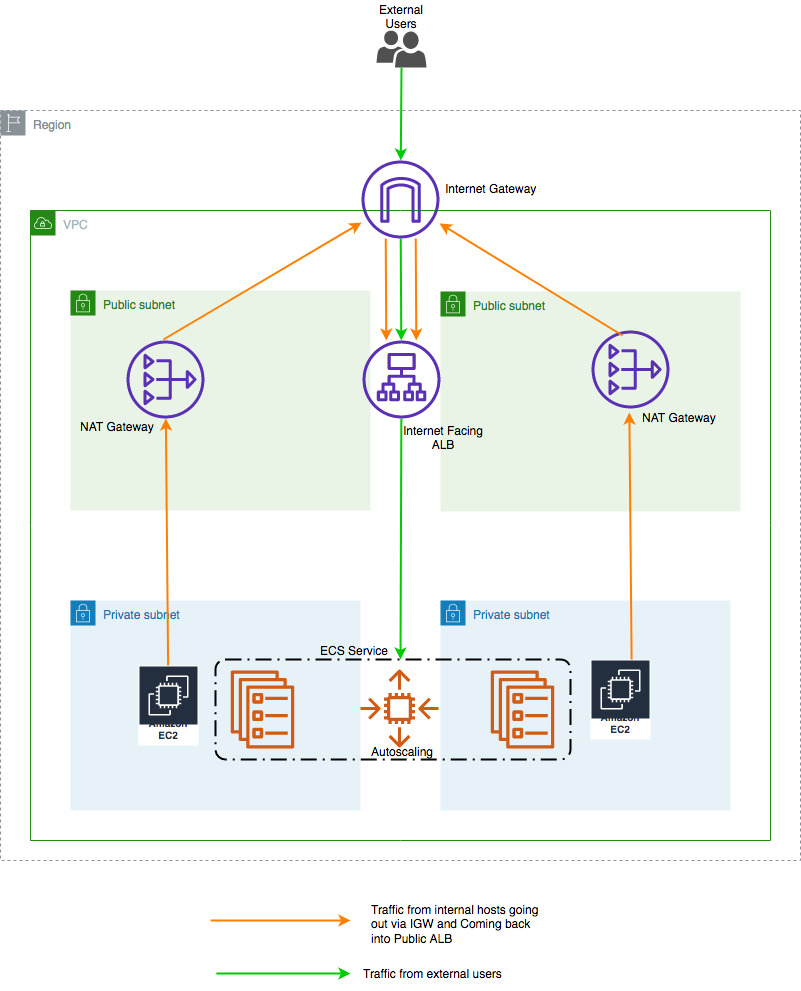Containers
Category: Amazon EC2 Container Service
Access Logging Made Easy with AWS App Mesh and Fluent Bit
I’ve found that the term microservices can have different meanings and benefits depending on who you talk to. However, the one benefit where I’ve typically found consensus is that microservices allow your teams to have the freedom to choose the best tool for each job. Meaning, microservices architectures shouldn’t follow a “one size fits all” […]
The role of AWS Fargate in the container world
In 2017, we introduced a serverless service to run containers at scale called AWS Fargate. Today, customers are launching tens of millions of containers on it every week. Customers keep telling us that the reason they love Fargate is because it removes a lot of the infrastructure undifferentiated heavy lifting. For example, they no longer […]
AWS CodeDeploy now supports linear and canary deployments for Amazon ECS
AWS CodeDeploy has extended blue/green deployment support for Elastic Container Service (Amazon ECS) to include canary and linear deployments for applications hosted on AWS Fargate or Amazon Compute Cloud (Amazon EC2). Blue/green deployments are a safe deployment strategy provided by AWS CodeDeploy for minimizing interruptions caused by changing application versions. This is accomplished by creating […]
Deep Dive on Amazon ECS Cluster Auto Scaling
Introduction Up until recently, ensuring that the number of EC2 instances in your ECS cluster would scale as needed to accommodate your tasks and services could be challenging. ECS clusters could not always scale out when needed, and scaling in could impact availability unless handled carefully. Sometimes, customers would resort to custom tooling such as […]
How to use Multiple load balancer Target Group Support for Amazon ECS to access internal and external service endpoint using the same DNS name
Customers running container-based applications on Amazon ECS using Amazon EC2 (commonly referred to as EC2) or AWS Fargate, frequently need to expose the application to both external clients and internal clients within the Amazon VPC (commonly referred to as VPC). In this blog post, we will look at a solution to optimize cost and reduce […]
How to Run ECS Windows Task with group Managed Service Account (gMSA)
Amazon Elastic Container Service(ECS) recently announced gMSA support, and the focus of this blog post is to show you how to deploy a Windows Task with gMSA credentials. Though the main focus is on ECS Task, I will also show you how to set up an AWS managed Active Directory with a gMSA account, and […]
Announcing the Amazon ECS CLI v2
Amazon ECS released version 1 of the Amazon ECS CLI in 2015. The Amazon ECS CLI simplified the management of your Amazon ECS clusters, tasks, services, and ECR repositories by enabling you to create profiles and cluster configurations with default settings. While many customers have found the Amazon ECS CLI useful, we have received feedback […]
Amazon ECS availability best practices
We spend a lot of time thinking about availability at AWS. It is critically important that our service remains available even during inevitable partial failures in order to allow our customers to gain insight and take remedial action. To achieve this, we rely on the availability afforded us by Regional independence and Availability Zones isolation. […]
Using sidecar injection on Amazon EKS with AWS App Mesh
AWS App Mesh works on the sidecar pattern where you must add containers to extend the behavior of existing containers. Kubernetes offers mutating admission controllers that allow operations teams to automate sidecar injection. In this post, I discuss the basics of the sidecar pattern and Kubernetes admission controllers and demonstrate how the App Mesh Sidecar […]
How Amazon ECS manages CPU and memory resources
On August 19, 2019, we launched a new Amazon Elastic Container Service (Amazon ECS) feature that allows containers to configure available swap space on Linux. We want to take this opportunity to step back and talk more holistically how ECS resource management works (including the behavior this new feature has introduced). Specifically, we want to clarify how CPU and memory […]









